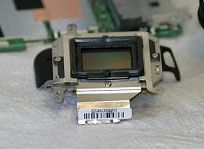There is a lot to be said for making stuff yourself, but what when there are things you can’t make? I’m a half-decent programmer, but couldn’t write a piece of image software if my life depended on it. Luckily, there is a lot of fantastic freeware out there. My good buddy Ed Perchick has rummaged through the darkest corners of the interweb…
First, you need to copy the images from the memory card, to your computer.
Rename4u- when uploading images from your memory card to the computer, this free windows tool makes it easy to give sets of images better file names.
Next, if you shoot in RAW, you need to convert to JPEG / TIFF.
Raw Shooter Essentials – completely free Windows RAW converter. Has a subset of the functionality of its paid for big brother, but still fantastic quality, and output quality is as good.
Next, you will probably want to make some image corrections.
The Gimp – very powerful image editor – open source, available on all platforms, and loads of community support.
Then, you may want to apply other corrections, e.g. reduce noise, convert to black and white, or other creative treatments.
Virtual Photographer – this is a great Photoshop compatible plugin which has loads of good quality effects, e.g. Sepia, black and white grain, and is very worthwhile.
GrowCut – this is a fabulous free Windows Photoshop compatible plugin that assists making complex selections.
Noiseware Community Edition – free advanced noise reduction software – sure it doesn’t have the flexibility, or advanced features of its paid for siblings, but it still gives great results, and it’s free.
* Neat Image Demo – the demo of
Neat Image is another freeware noise reduction software with lots of features
And finally, if you’ve shot landscape shots, you may want to stitch them together.
Autostitch – – this is unbelievable, and free. It automatically stitches sets of images together into panoramas – it adjusts brightness, colour, skews, stretches, and has seamless results.
Finally Photo Freeware as its name suggests, has bags of photographic freeware to download.
article by Ed Perchick
Do you enjoy a smattering of random photography links? Well, squire, I welcome thee to join me on Twitter -
© Kamps Consulting Ltd. This article is licenced for use on Pixiq only. Please do not reproduce wholly or in part without a license. More info.

 Most hardcore DIY fans out there will have heard of Make magazine – it’s O’Reilley’s first steps into the magazine publishing world, after many a year of publishing high-quality books.
Most hardcore DIY fans out there will have heard of Make magazine – it’s O’Reilley’s first steps into the magazine publishing world, after many a year of publishing high-quality books.











 Oh, the smells of fixative, how I have missed you. I went wholly digital in 2002, and have nary set foot in a darkroom since. But if it hadn’t been for dark-rooms and the manual art of processing film, I think I wouldn’t have been nearly as good a photographer today*.
Oh, the smells of fixative, how I have missed you. I went wholly digital in 2002, and have nary set foot in a darkroom since. But if it hadn’t been for dark-rooms and the manual art of processing film, I think I wouldn’t have been nearly as good a photographer today*.

 This one falls in the “if you are planning to do this, you have to hate your SLR” category. If you enjoyed our earlier tip about IR photography, you will probably have noticed that many cameras – especially DSLR cameras – have IR filters built into the body. Obviously, that means that you can’t use it for IR photography. Unless you remove the filter, that is…
I wouldn’t dare do it to my own camera, but if you have a destructive streak (or very steady hands), you could follow the instructions posted on
This one falls in the “if you are planning to do this, you have to hate your SLR” category. If you enjoyed our earlier tip about IR photography, you will probably have noticed that many cameras – especially DSLR cameras – have IR filters built into the body. Obviously, that means that you can’t use it for IR photography. Unless you remove the filter, that is…
I wouldn’t dare do it to my own camera, but if you have a destructive streak (or very steady hands), you could follow the instructions posted on